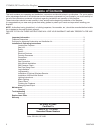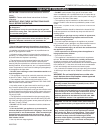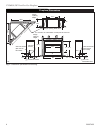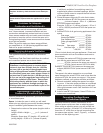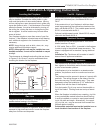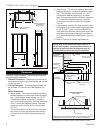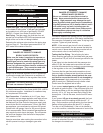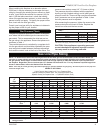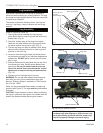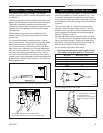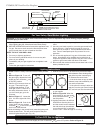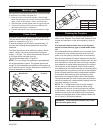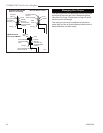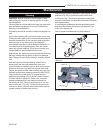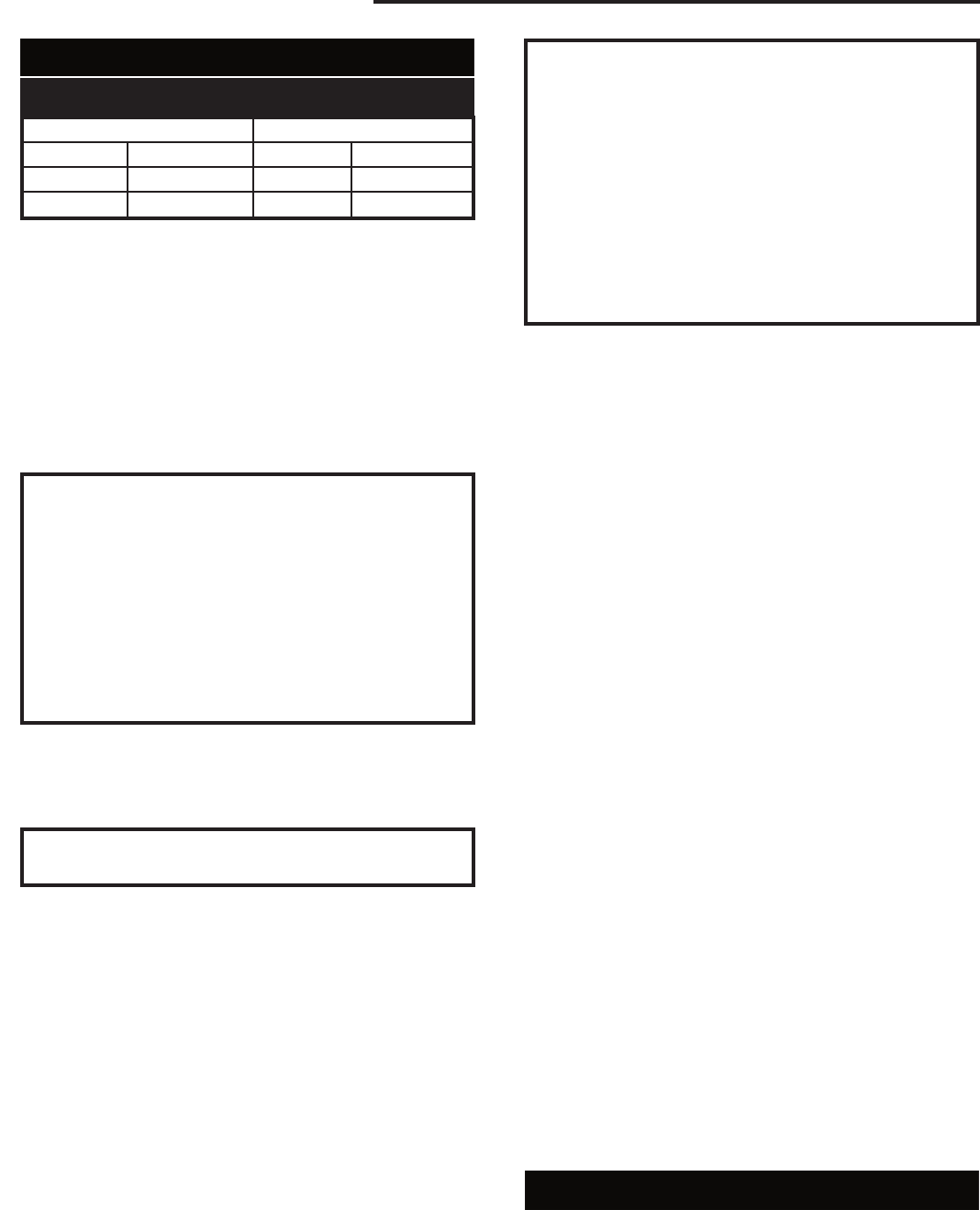
10
UV36RN/RP Vent-Free Gas Fireplaces
20007436
BTU/Hr
Model Fuel Hi Low
UV36RN Natural 29,000 18,000
UV36RP LP/Propane 29,000 23,000
Gas Specifications
Gas Connection
Connection between the manual shut-off valve and the
gas valve can be made with a CSA design certified flex-
ible connector if allowed by local codes. A drip leg is still
required. Tighten all joints securely.
NOTE: If the manual gas shut-off valve is located in
the control compartment, the two screws that hold the
control cover in place during shipping must be left out
so the control cover is removable by hand.
Testing the Gas Piping. Test all piping for leaks.
When checking gas piping to the heater with gas pres-
sure less than 1/2 psi, shut off manual gas valve for the
heater.
If gas piping is to be checked with the pressure at or
above 1/2 psi, the heater and manual shut off valve
must be disconnected during testing to prevent damage
to the regulator on the unit, (see WARNING).
To ensure that the gas lines and connections do not
have any leaks, a pressure test should be performed.
Only a qualified installer should perform the pres-
sure test to ensure that the unit is not damaged by
high pressures! Apply soapsuds (or a liquid deter-
gent) to each joint. Bubbles forming indicate a leak.
Correct even the slightest leak at once.
If you connect natural gas to an LP gas unit, you may
be unable to ignite the pilot. If the pilot does ignite, the
front burner flame on the low setting will be bright blue
but only 1/4” to 1/2” long and most likely lifting off the
burner ports. If this is the case, turn the unit off imme-
diately.
If you connect LP gas to a natural gas unit, the front
burner flame on the low setting will be about 6” - 8”
long. On the medium and high setting, the front burner
flames will be bright yellow and about 10” in length.
Turn the unit off immediately! If the unit is allowed to
run in this condition, substantial amounts of soot will be
generated and emitted into the house.
High Altitude Installation
CSA listed vent free gas fireplaces are tested and ap-
proved for elevations from 0 to 2,000 feet (0-610m) with
no change to the rated input.
Check Gas Type. Use only the gas type indicated
on the heater’s rating plate. If the gas type indicated
on the plate is not your type of gas supply, DO NOT
INSTALL. Contact your dealer for proper model.
Gas Piping. The gas supply line must be of an ad-
equate size to handle the BTU/HR requirements and
length of the run for the unit being installed.
Determine the minimum pipe size from the piping size
chart on Page 10. The normal gas connection is 1/2”
NPT made at the center of the unit.
WARNING
DANGER OF PROPERTY DAMAGE,
BODILY INJURY OR DEATH.
Make sure the heater is equipped to operate on
the type of gas available. Models designated as
natural gas are to be used with natural gas only.
Heaters designated for use with liquified petro-
leum (l.p.) gas have orifices sized for commercial-
ly pure propane gas. They cannot be used with
butane or a mixture of butane and propane.
Always use an external regulator for all LP appliances
to reduce the supply tank pressure to a maximum of
13” w.c. This is in addition to the regulator fitted to the
heater.
WARNING: Connecting directly to an unregulated
LP tank can cause an explosion.
All piping must comply with local codes and ordinances
or with the National Fuel Gas Code (ANSI Z223.1/NFPA
54), whichever applies. Installation of a sediment trap
is a requirement of this code.
Gas Connection. If installation is for L.P. gas, have
L.P. installer use two-stage regulation and make all con-
nections from the storage tank to the heater. Refer to
the National Fuel Gas Code for the proper supply tank
size with the Btu’s/Hr requirements. If this is the ONLY
gas appliance, we recommend a minimum 200 pound
cylinder with a fill gauge. Use of a 100 pound cylinder
is not recommended. Other household gas appliances
may require the tank size to be larger. Do not operate
the vent free fireplace if the fuel level in the propane
tank is below 1/4 full.
Use pipe wrenches when making the connection to the
valve to prevent turning or damage to gas valve.
WARNING
DANGER OF PROPERTY DAMAGE,
BODILY INJURY OR DEATH.
Never use a match or open flame to test for
leaks. Never exceed specified pressures for
testing. High pressures may damage the appli-
ance regulator which would require replacement.
Liquified petroleum (LP) is heavier than air and it
will settle in any low area, including open de-
pressions and it will remain there unless area is
ventilatedNever attempt start-up of unit before
thoroughly ventilating area.



